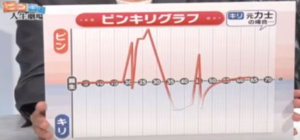In any professional sport, there is a finite time the athlete can be competitive and athletes usually need to find a second career after retirement. This can be extremely difficult for some as they dedicate their teens, twenties, and even thirties to the competition arena while their peers use this time to develop their resume and immerse themselves into their professional career. Sumo wrestlers in Japan are no different. Upon retirement, from age, injury, or whatever reason, they need to find a second career either in or out of sumo. While their success in competition is rewarded financially during their competitive careers, their revenue stops upon retiring. Below is a graph on the wages a sumo wrestler receives by rank.

Successful Sumo wresters have the opportunity to become a coach, a stable master, and take on the responsibility of raising the next generation of sumo wrestlers. Most, move on from sumo and take on an alternative career outside of sumo. In this video, two sumo wrestlers are compared to show the highs and lows of a sumo wrestler in retirement.
The video talks about the highs and lows of retired sumo wrestlers, taking a look at Tanino Yasuaki who reitred at age 24 and Misugisato Koji who retired at age 34. The first retired sumo wrestler, Tanino Yasuaki, started a ramen shop after reading an article in a magazine. He says he was extremely lucky to have fallen into his very successful ramen business, but had to work his way up, paying off a loan to start the business. Tanino has continued to find financial success with the ramen shop, and has even donated his highly valuable carp to a public center. (These carp are valued at hundreds of dollars) The second retired sumo wrestler, Misugisato Koji, became a manual body therapist. While he did have some initial success, the earthquake and tsunami in 2011 coincided with the opening of his third location. This horribly timed expansion forced him to close shop. Although he has maintained one location, his success on the sumo ring hasn’t carried over into his second career as well.
The graphs show the highs and lows of the two sumo wrestlers:


While their post retirement career have led them towards different paths and levels of success, they both share the value to taking responsibility for their actions and working hard to share happiness with others.